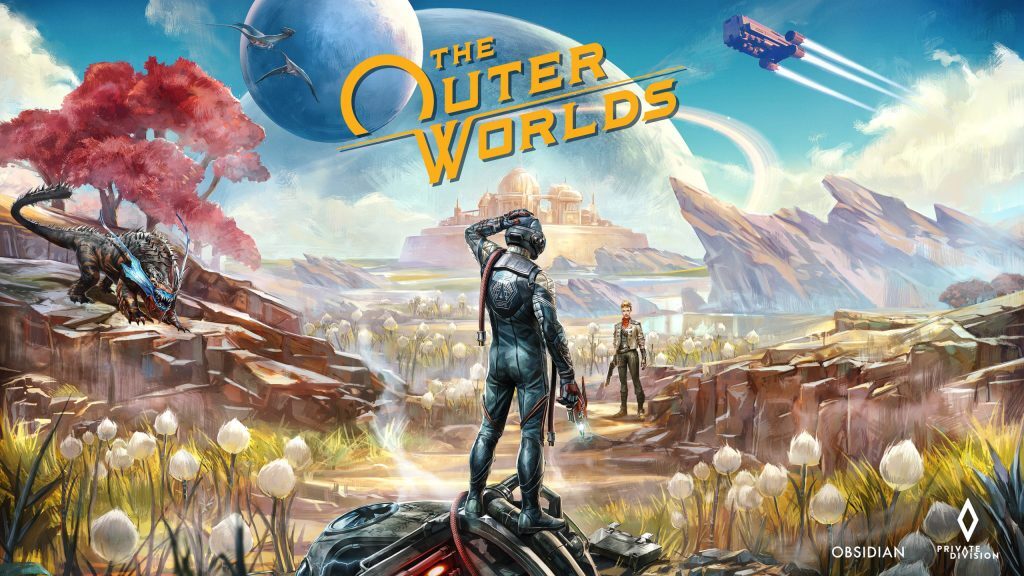Provided your idea of a ‘good’ game extends beyond the annual twitch-shooter (often found on Twitch — funny that), sportsball or battle royale releases, The Outer Worlds is the best game you’ll run into in 2019. We’re backdating that as well — nothing else released this year comes close.
That’s an awfully bold claim but it’s one that The Outer Worlds has stuffed and mounted on the wall. An RPG in the vein of Fallout, made by the studio responsible for the acclaimed (but buggy) Fallout: New Vegas, this is very, very nearly the perfect video game. Our only complaint is that it had to end at some point. Even then, replayability seems to be baked in from the start.
A ray of Hope
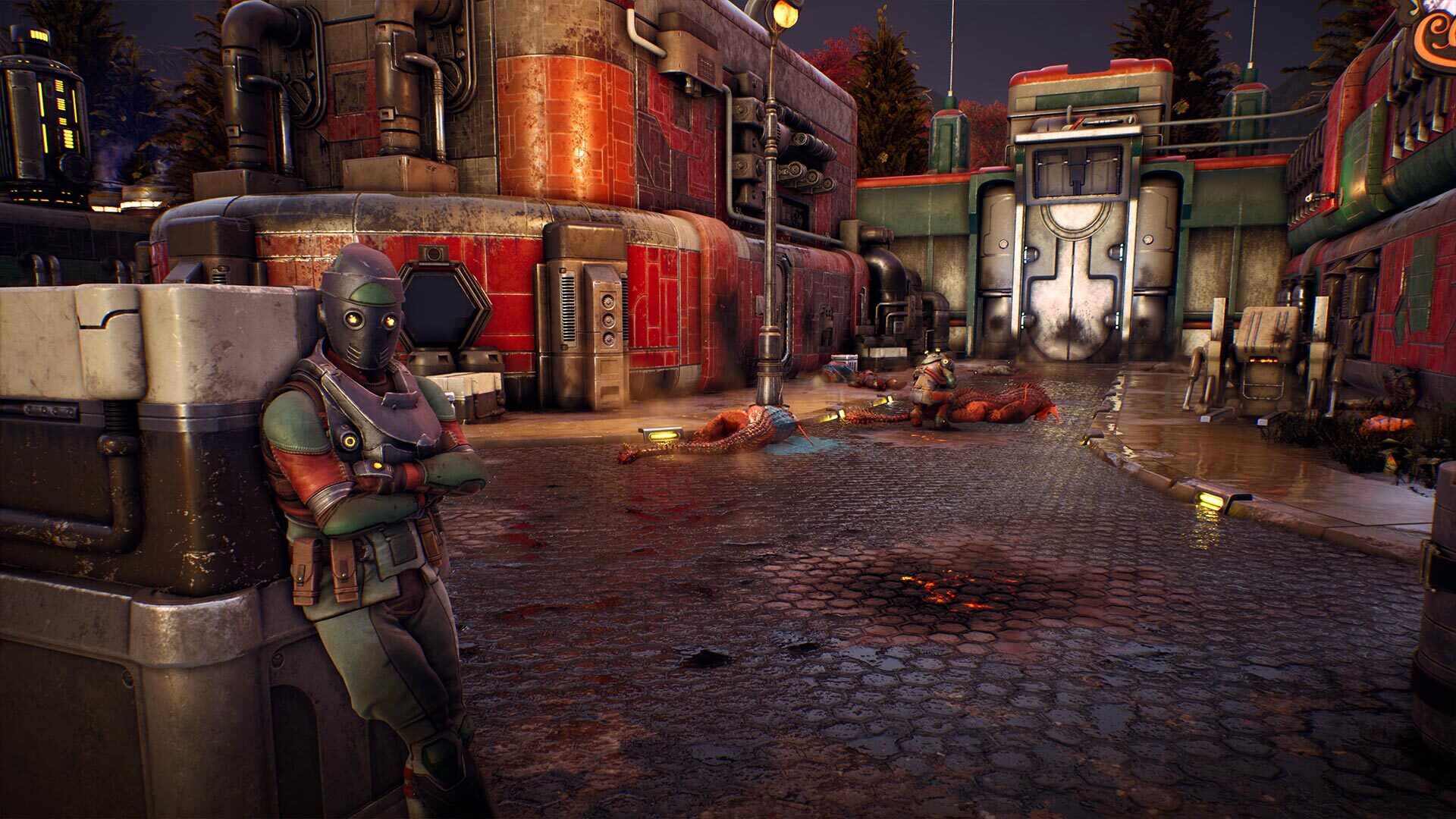 The Outer Worlds starts the same way we’ve seen
The Outer Worlds starts the same way we’ve seen several most all Fallout titles begin. A single hero is sprung from his or her protected location to venture out into the world to save it. Or not. That’s up to you. In this instance, players are one of many colonists on board the Hope, a ship that… well, you’ll get there. Long story short, everyone’s asleep and has been for a while. And you might be the one to wake them up.
Your custom character — the creation options are mighty extensive, letting you create… whatever you’d like, as long as it’s human — wakes up to a world where corporations run everything. But the feel is far more Fallout than cyberpunk. You’ll spend the initial hours constantly expecting to see a Vault Boy mascot. It doesn’t help that the unfreezing process suppressed your inner monologue gives you the ability to slow down time. Called Tactical Time Dilation, it’s an evolved version of V.A.T.S.
This is basically Fallout in space, but an entry that beleaguered publisher Bethesda can only dream about making. What do we mean? Well, this one works. Right out of the box. Through more than 30 hours of gameplay, we didn’t encounter a single bug. If Bethesda’s engine was running this thing, we’ve have been constantly amazed that it launched on command.
Integral derivatives
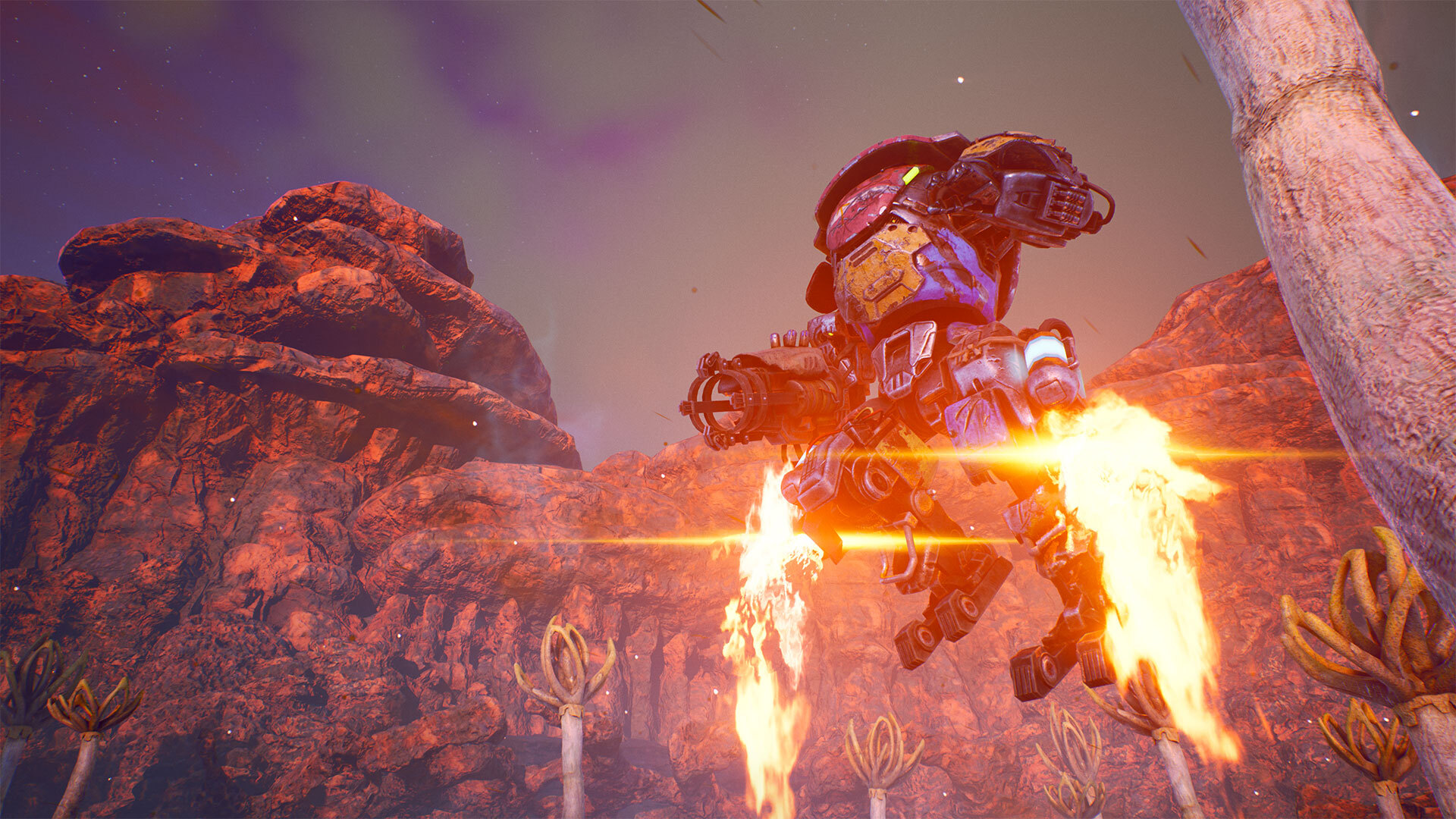 We’re not kidding about the Fallout comparison. A whole lot of the systems are… borrowed… from Fallout. The initial planet, where the tutorial happens, feels so much like Fallout: New Vegas that we were convinced the developers had just reskinned a mod. There are hub areas where people congregate, wider open spaces where the nasties lurk, and everything you say and do might have some sort of effect later. The setting, the roads, the way enemies react feels very familiar indeed. And since the game quickly evolves into its own creature, the early hours are likely just to ease you into coming differences.
We’re not kidding about the Fallout comparison. A whole lot of the systems are… borrowed… from Fallout. The initial planet, where the tutorial happens, feels so much like Fallout: New Vegas that we were convinced the developers had just reskinned a mod. There are hub areas where people congregate, wider open spaces where the nasties lurk, and everything you say and do might have some sort of effect later. The setting, the roads, the way enemies react feels very familiar indeed. And since the game quickly evolves into its own creature, the early hours are likely just to ease you into coming differences.
But it’s the systems that are really familiar. There are a range of skills to level comprising everything from weapon handling to dialogue to lockpicking (though these are levelled differently… for a while), perks that crop up every second level, and the dialogue system feels familiar too. It comes across as a space-themed knockoff until you notice that all of Obsidian’s RPG features have their own distinct properties. Sure, there are Fallout-like bits in the backend but there are also influences from Borderlands, Dragon Age (especially in the way parties work), while the whole setting feels like Firefly: The Game. This is never more obvious than when you’re aboard your ship/base of operations, the Unreliable. In fact, you can totally play as a snarky space pirate with a heart of gold if you really wanna.
Part of something greater
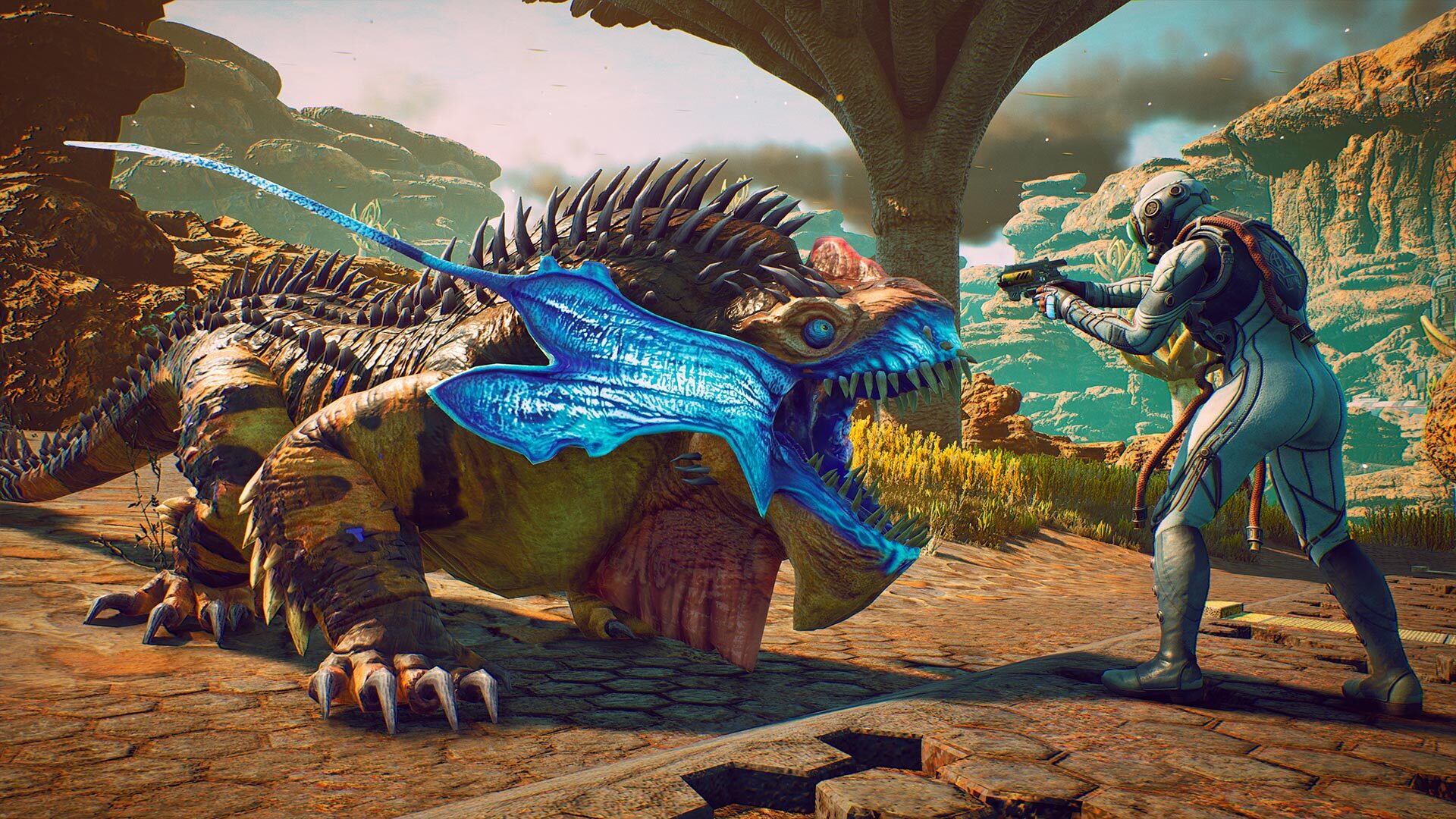 As you play, the game opens up into its own thing. Fallout‘s skill set has been grafted onto Planescape: Torment‘s dialogue system — the way that companion characters (there are six to recruit) address the player or interject at key moments is fantastic. For fans of roleplaying, this is as immersive as it gets from your couch. Gunplay is faster and more fluid than most RPGs, leading to some seriously fun combat in the early stages. Once you pick up a few companions it changes from solo Borderlands to Mass Effect, with your partners using special abilities on enemies on command. If you’ve avoided Supernova difficulty, they also can’t be killed. So there’s that.
As you play, the game opens up into its own thing. Fallout‘s skill set has been grafted onto Planescape: Torment‘s dialogue system — the way that companion characters (there are six to recruit) address the player or interject at key moments is fantastic. For fans of roleplaying, this is as immersive as it gets from your couch. Gunplay is faster and more fluid than most RPGs, leading to some seriously fun combat in the early stages. Once you pick up a few companions it changes from solo Borderlands to Mass Effect, with your partners using special abilities on enemies on command. If you’ve avoided Supernova difficulty, they also can’t be killed. So there’s that.
But there’s also a weapon and armour system that’s detailed without being all-consuming. You can modify several weapon types — sadly not as many as we’d have liked — with augmentations that add scopes, reduce weapon spreads or change elemental attacks. There’s shock for robots, plasma for humans, and large amounts of bullets for armoured enemies. There are some unique weapons and armours scattered around the well-populated worlds you’ll traipse around, either talking to targets or putting high-velocity lead though them. Mostly both, but your speech skill tends to define who you’re shooting at. And it’s when you’re talking that The Outer Worlds is at its best.
Writing’s on the wall
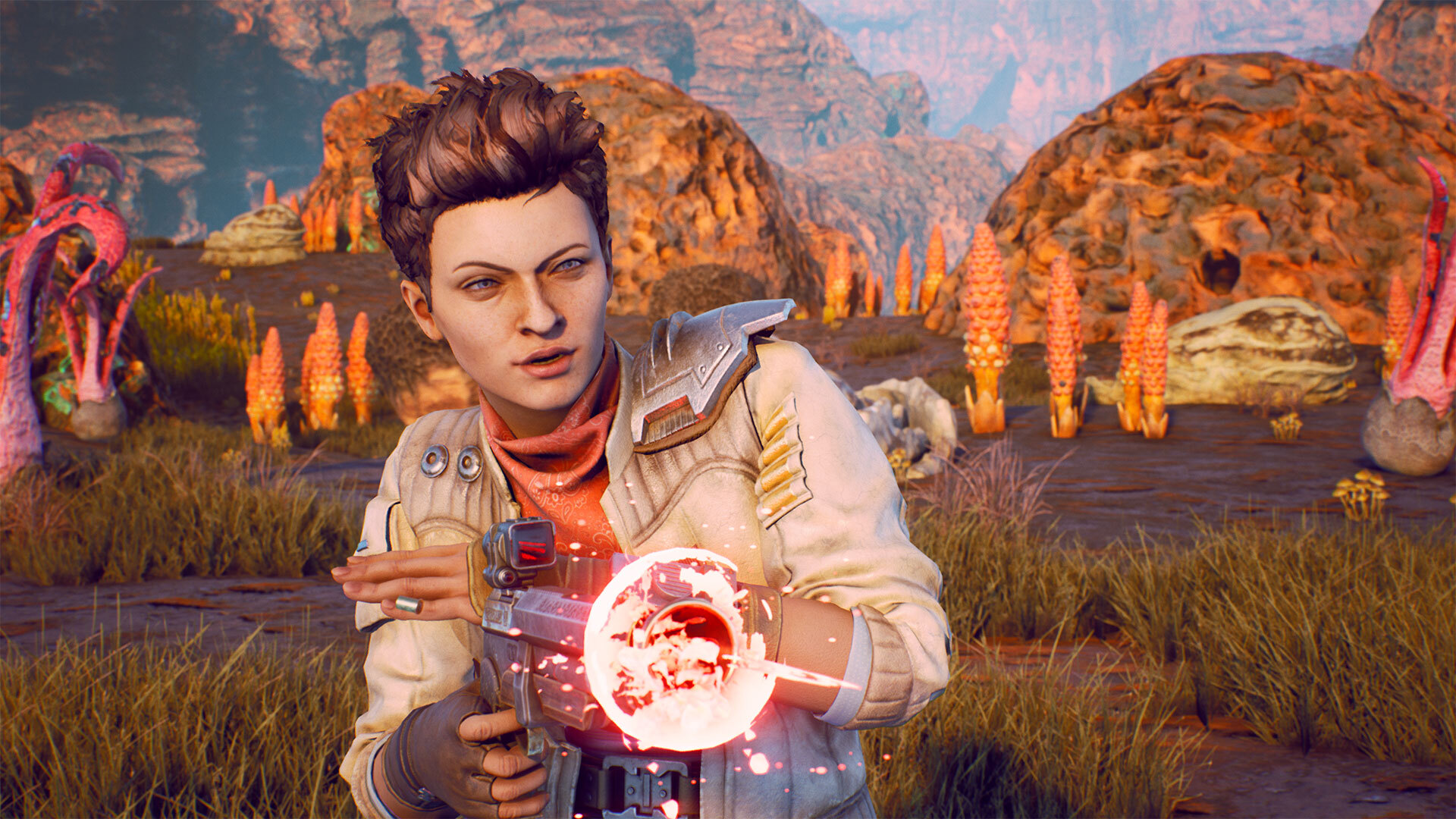 And that’s because the writing for this game is absolutely brilliant. It doesn’t seem to matter how you spec your character or which of the many approaches you take to each of the available (and detailed) quests, there always seems to be something unique coming down the pipe. Including an interaction to do with how video games make players jump through hoops in order to do something as simple as going outside and flipping a switch. You have to choose to start that interaction and then carry it to its finish. For a long-time gamer, the results are hilarious. But odds are, no matter who you are, The Outer Worlds will make you snort milk/water/beer through your nose at some point.
And that’s because the writing for this game is absolutely brilliant. It doesn’t seem to matter how you spec your character or which of the many approaches you take to each of the available (and detailed) quests, there always seems to be something unique coming down the pipe. Including an interaction to do with how video games make players jump through hoops in order to do something as simple as going outside and flipping a switch. You have to choose to start that interaction and then carry it to its finish. For a long-time gamer, the results are hilarious. But odds are, no matter who you are, The Outer Worlds will make you snort milk/water/beer through your nose at some point.
It’s not just humour either, though there’s plenty of that. There’s a collection of very real, very human moments scattered throughout the game. You might find yourself segue from a jocular exchange directly into a sort of emotional gut-punch without warning. And those punches have the ability to hurt. You, specifically. Unless you don’t have a soul, of course. Yes, Damien, we’re talking about you.
There’s also the way the many various factions react to your actions. You can be both on their good and bad sides at the same time — loved and feared, as it were. Or you can come down on one or another of the sides. You can choose to fulfil the mission you were thawed out for or you can side with the nasty old corporations but there are some weighty themes to grapple with while you’re doing it. Grey morality, which is our favourite sort of morality. Because, well… everyone’s a little dirty at the end of the day.
Attention to detail
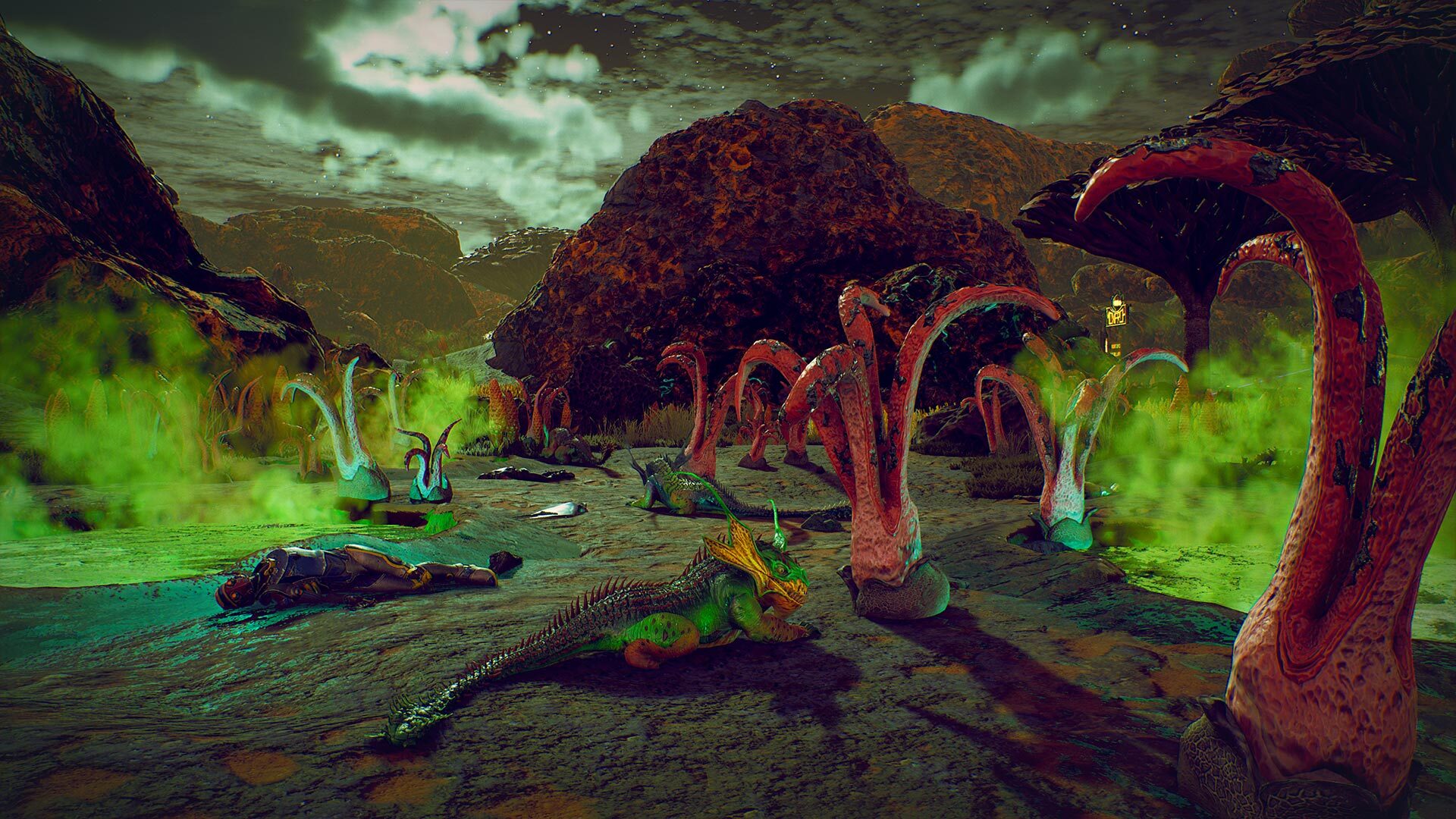 If you want to see what sort of game The Outer Worlds really is, watch it while doing nothing. Seriously. Pay close attention to the idle animations when you’ve highlighted a potential partner in the party select screen. Stand around for a bit and see what your companions do. Listen to them when they start talking, especially when Felix is explaining Tossball to Parvati. Stop and look at the world that has been created. Really pay attention to the way that the textures fit together, how each area has been designed. The one thing you’ll find everywhere? Small touches.
If you want to see what sort of game The Outer Worlds really is, watch it while doing nothing. Seriously. Pay close attention to the idle animations when you’ve highlighted a potential partner in the party select screen. Stand around for a bit and see what your companions do. Listen to them when they start talking, especially when Felix is explaining Tossball to Parvati. Stop and look at the world that has been created. Really pay attention to the way that the textures fit together, how each area has been designed. The one thing you’ll find everywhere? Small touches.
Touches like the idle animations for the Canids, Raptidons and Mantisaurs. Watch the way they move and yawn and curl up to sleep. That doesn’t have to be there. Touches like the way quests you haven’t encountered yet slot into what you’re doing if you happen upon an important item. Touches like how NPC moods change in response to your dialogue. Obsidian spent a lot of time making a fantastic world seem very, very real. And, if you’re watching closely enough, you’ll see there are surprisingly few errors.
Nothing’s perfect
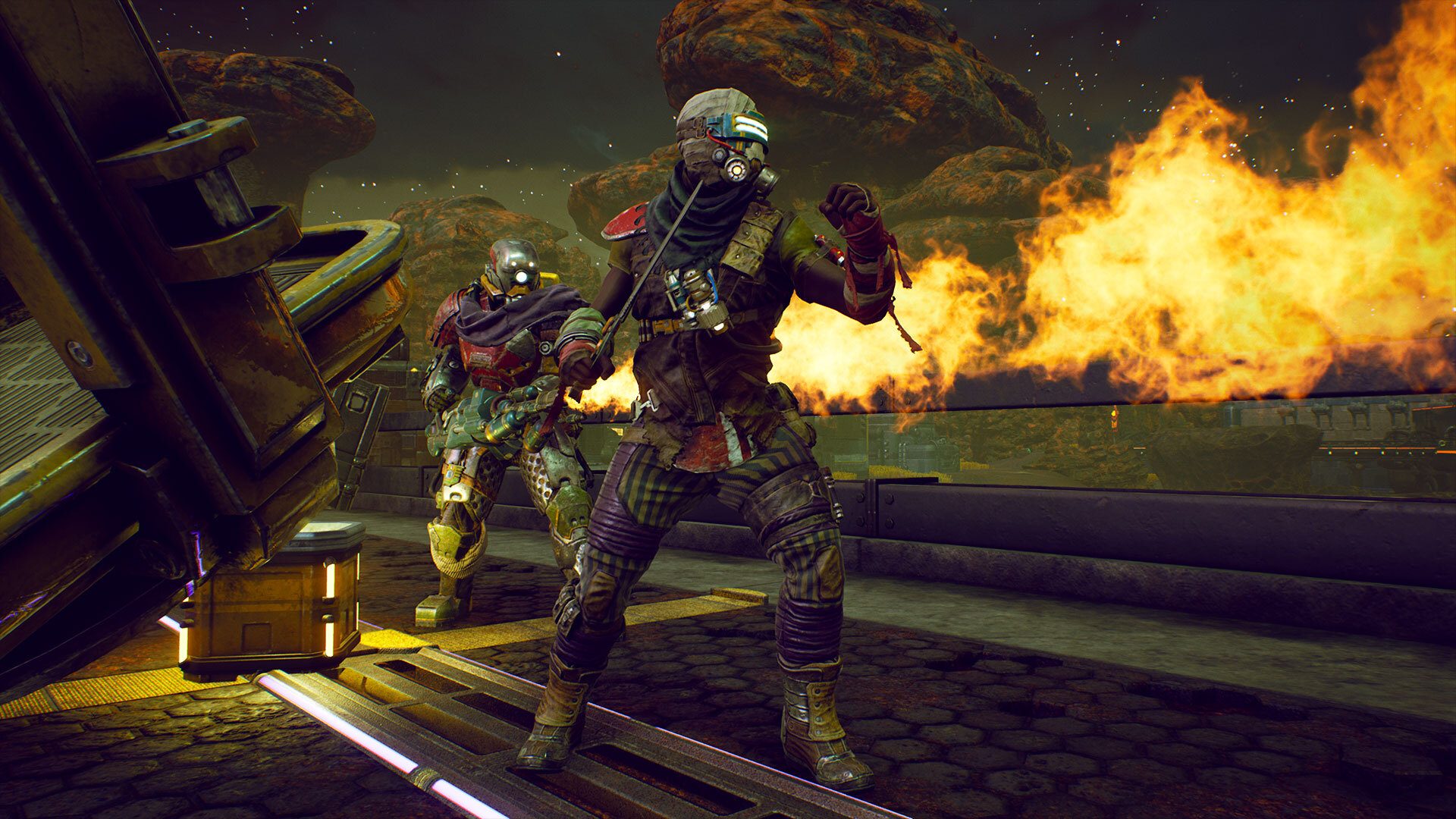 But not zero errors. There are faults to be had here, but they’re almost all related to the difficulty. Play on normal and you’ll eventually find that combat loses its sting. Players have the ability to turn themselves into an unstoppable juggernaut of doom, especially when you’ve got someone like Nyoka or Vicar Max on your team. This setting means that the fairly complex system of consumables goes more or less dormant. You don’t need to eat or drink in order to survive. At all. Just guns and your inhaler. While might be just as well, because the food is disgusting. Yet… believable. If a cystypig (which has bits of pork just… fall off its back) existed, someone would eat it.
But not zero errors. There are faults to be had here, but they’re almost all related to the difficulty. Play on normal and you’ll eventually find that combat loses its sting. Players have the ability to turn themselves into an unstoppable juggernaut of doom, especially when you’ve got someone like Nyoka or Vicar Max on your team. This setting means that the fairly complex system of consumables goes more or less dormant. You don’t need to eat or drink in order to survive. At all. Just guns and your inhaler. While might be just as well, because the food is disgusting. Yet… believable. If a cystypig (which has bits of pork just… fall off its back) existed, someone would eat it.
Turn it up a notch, especially early on, and you’ll get your space-faring behind handed to you regularly. Particularly if you avail yourself of the Flaw system, which introduces weakness into your character. Maybe you’re scared of robots or Raptidons, maybe you take more damage from a particular elemental type. It’s an interesting mechanic but it’s also one that’ll get you killed quite a lot on harder difficulties. But that’s about it. You can take issue with the way the game approaches issues, you might disagree with its criticisms of capitalism, sexism, corporate culture, and a near-indentured workforce. But the only thing the game doesn’t do really, really well is the combat. That’s… a little unbalanced. That’s it.
The Outer Worlds Verdict
If you’re the type to get lost in a good RPG for hours on end, you’ve just found Nirvana. That’s for several reasons. The writing is the star of the show and will have you believing in this very unlikely-looking galaxy. The corporations and the very modern-day problems the people you encounter are facing help there. The supplementary systems have been tuned just right that you feel you’re being productive without obsessing over stats. Combat is a blast (sometimes two), the companion characters are fun to be around and there are hidden jokes everywhere. When things haven’t suddenly become serious, that is. But the absolutely best thing about The Outer Worlds? It all works, nigh-on perfectly, without you being the beta tester. You just don’t find games that do that these days.
Provided your idea of a 'good' game extends beyond the annual twitch-shooter (often found on Twitch -- funny that), sportsball or battle royale releases, The Outer Worlds is the best game you'll run into in 2019. We're backdating that as well -- noting else released this year comes close.

